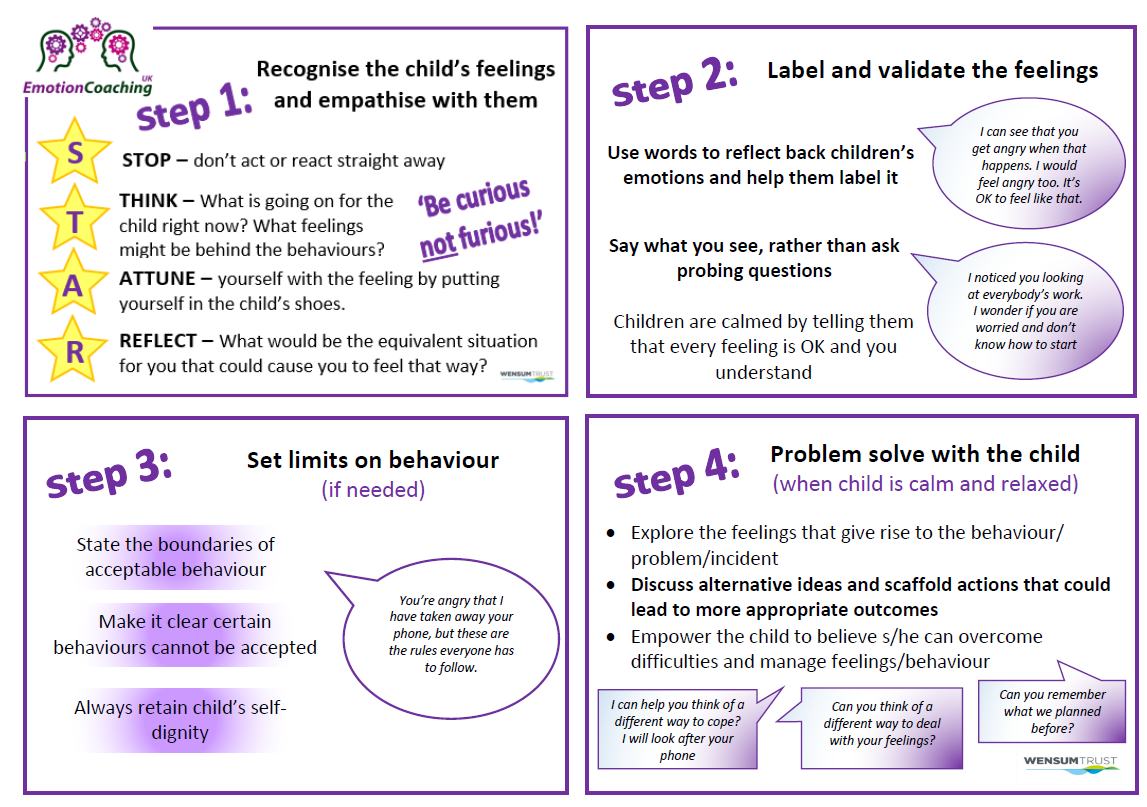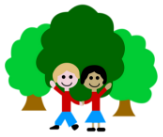Self Regulation and Emotion Coaching
‘Thinking of a child as behaving badly disposes you to think of punishment. Thinking of a child as struggling to handle something difficult, encourages you to help them through their distress.’
At Arden Grove Infant and Nursery School we recognise that behaviour is a form of communication and often reflects a child’s emotions or feelings. Our Behaviour and Emotional Regulation Policy is grounded in the belief that emotions drive behaviours and that we are able to develop our ability to self-regulate (manage) our emotions, our attention, actions and responses.
We value and understand that every child has a unique early life experience, environment and temperament and we recognise that children’s ability to self-regulate can be impacted by many things.
Expectations of Behaviour
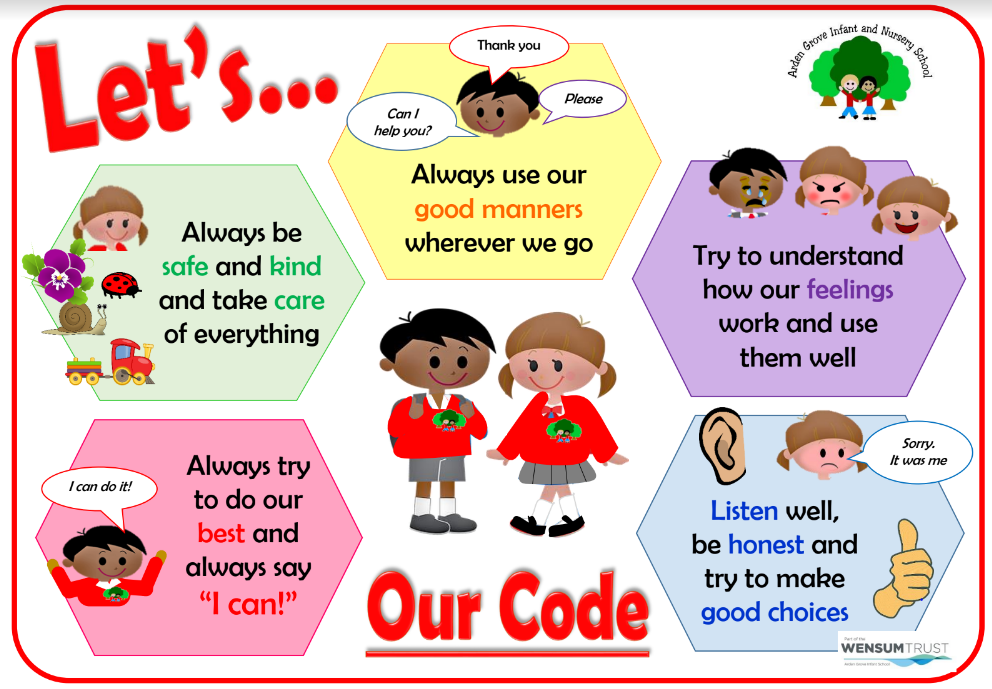
We have developed a set of expectations called ‘Our Code’ which is clearly displayed in every classroom and on corridor displays. Our Code says:
● Let’s always be safe and kind and take care of everything.
● Let’s always try to do our best and always say “I Can!”
● Let’s always use good manners wherever we go.
● Let’s try to understand how our feelings work and use them well.
● Let’s listen well, be honest and try to make good choices
Consequences
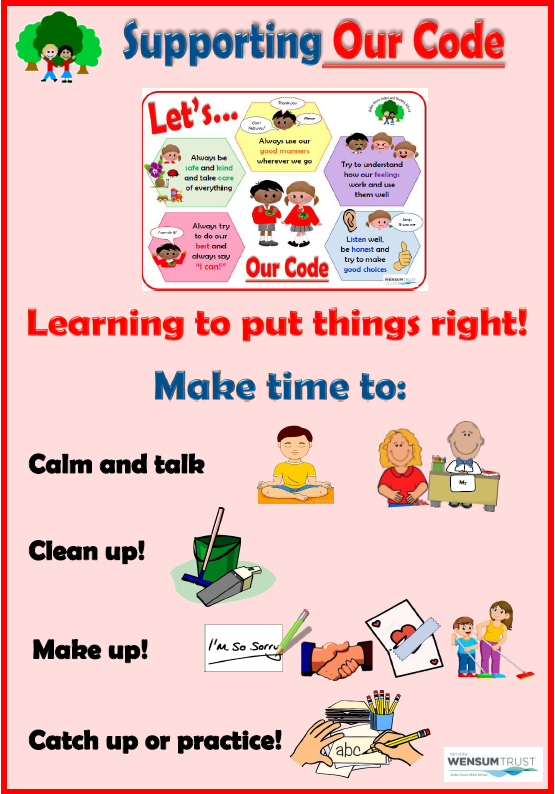
We do not use approaches that publicly shame children who are not able to manage their emotions or their behaviour. Instead, we use logical or natural consequences wherever possible as these support children’s development around their responses and helps them learn to take responsibility for their actions.
Our natural consequences support children to use their own time to:
● Clear up any mess that they have made
● Fix any damage they are responsible for
● Repair relationships
● Catch up with lost learning time
● Practice important skills like lining up or practice correct use of equipment
Individual circumstances and the child’s stage of development will be considered when considering consequences and how much adult support the child needs to put things right .
Language of Parts
All our children have the opportunity to make their own Parts Person which we add to over the year. This helps children become aware, identify and label their feelings and learn about their attributes (angry part, sad part, running part, chocolate loving part!) It teaches them that every emotion is OK and everyone is different. We use the Language of
Parts to help guide children’s behaviour and help them ‘grow’ or ‘shrink’ parts when needed.
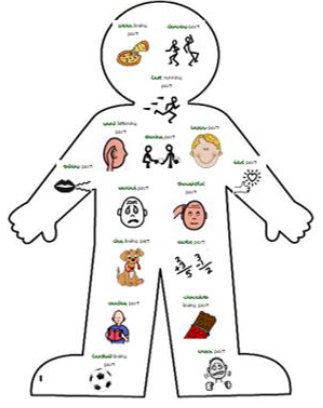
For example: “That is your snatching part, please use your sharing part”,
“It’s OK to have a cross part, but not Ok to use your hitting part!”
“I noticed you were talking again, please grow your listening part”
Regulation Stations
Each of our classrooms has a dedicated Regulation Station (or calm area) and we teach children to use this whenever they need to ‘lower their gears’ or feel their ‘lids may flip’ (see below). The Regulation Station is equipped with calming sensory resources and weighted blankets and children can use this area for a short time (independently or supported by adults), before returning to their tasks.
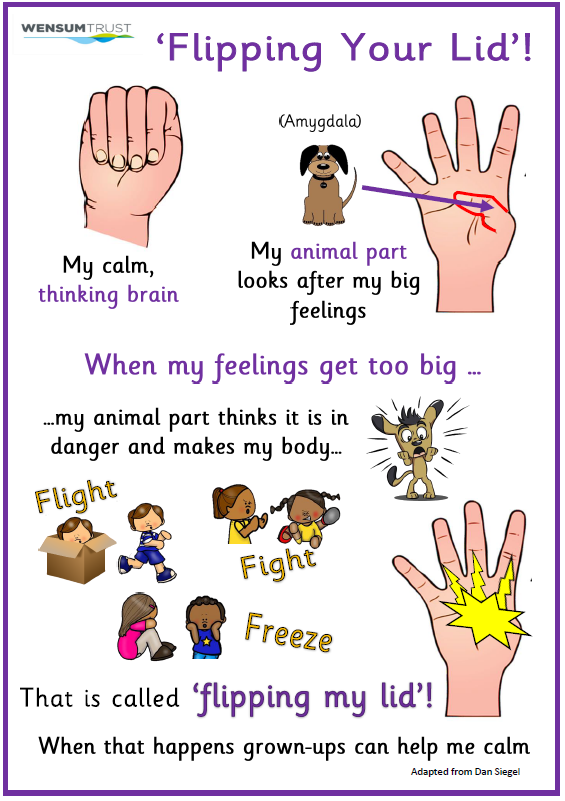
Emotion Coaching
Every member of staff is trained in Emotion Coaching and we use this as a tool to help children understand, regulate and reflect on their feelings and behaviour.
An important part of emotion coaching is understanding everybody’s stress response and in particular what this can look like in children when they are overwhelmed. Knowing that not all behaviours are within children’s control at that time and that they will need support to understand their behaviour is particularly important in reducing high levels of shame. We label children’s stress response as `Flipping their Lid’ using Daniel Siegel’s Hand Model of the Brain and teach these lessons termly as a reminder to help them understand this feeling.
When children struggle to meet any of the expectations of Our Code (details below) we use the following steps to support them to reflect and regulate their behaviour:
